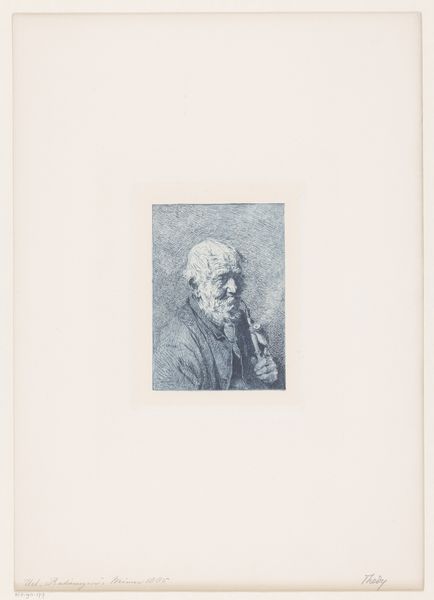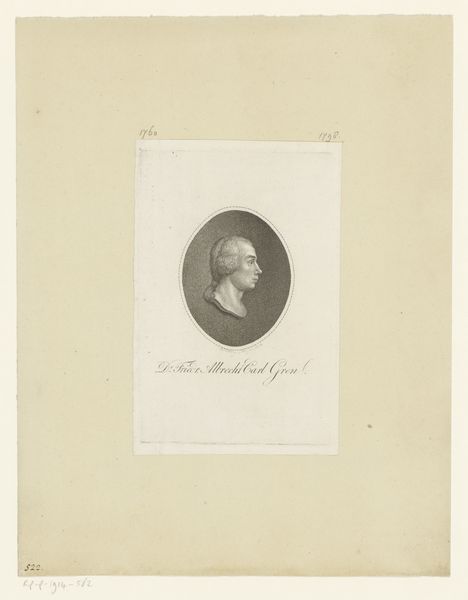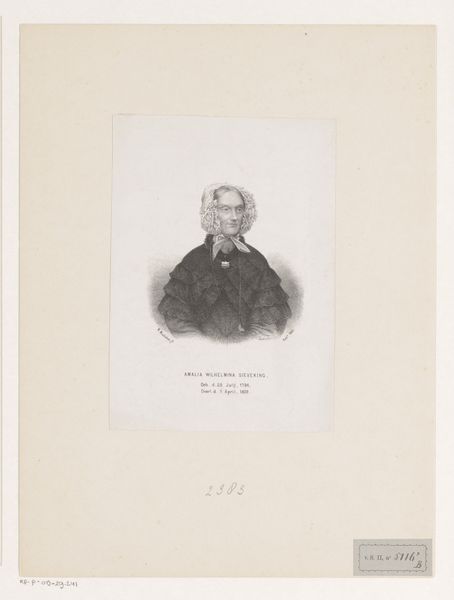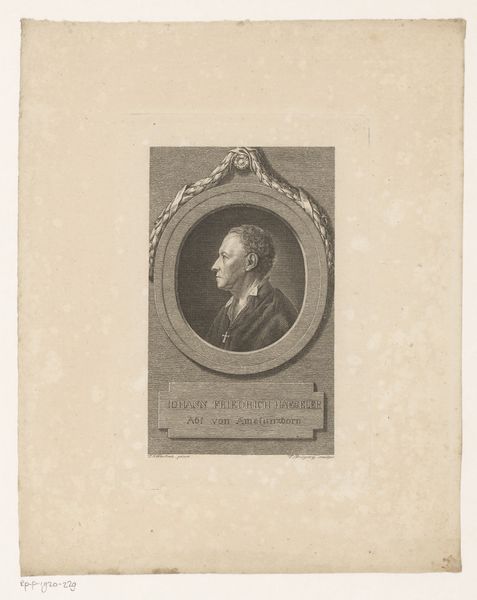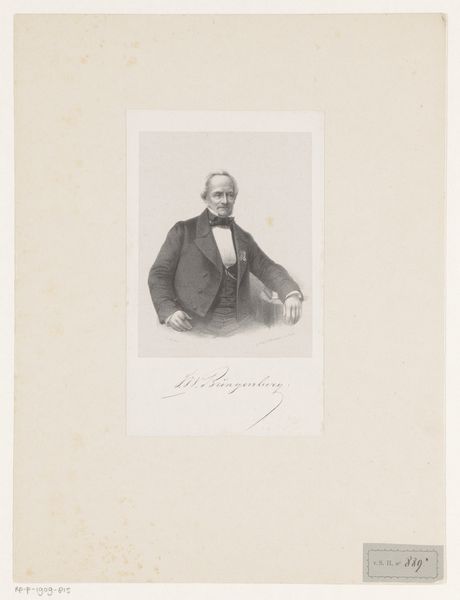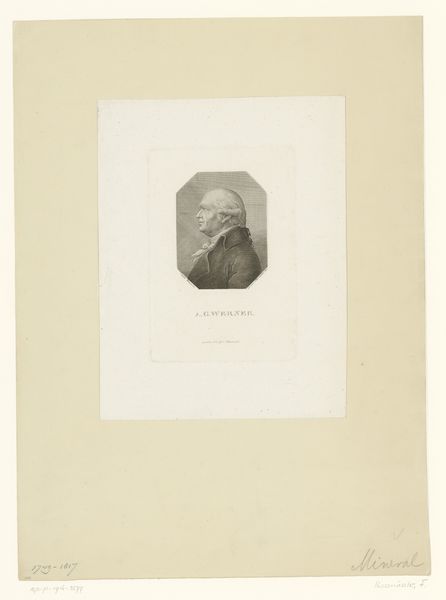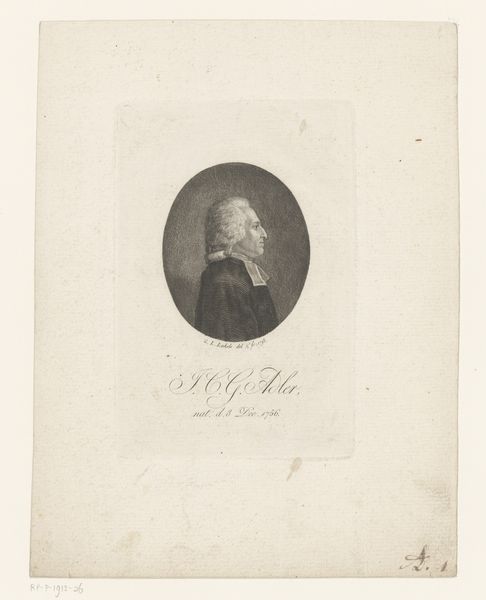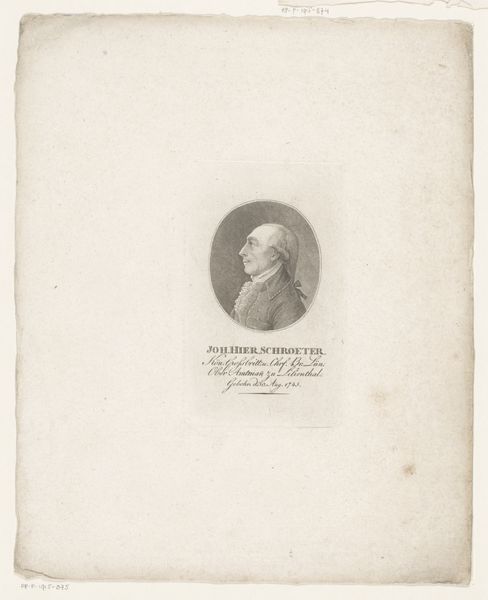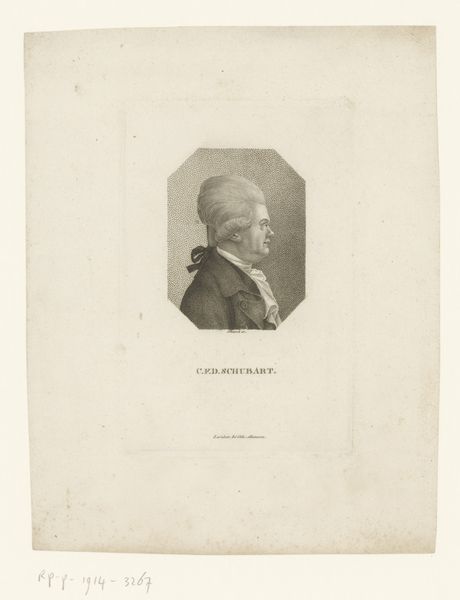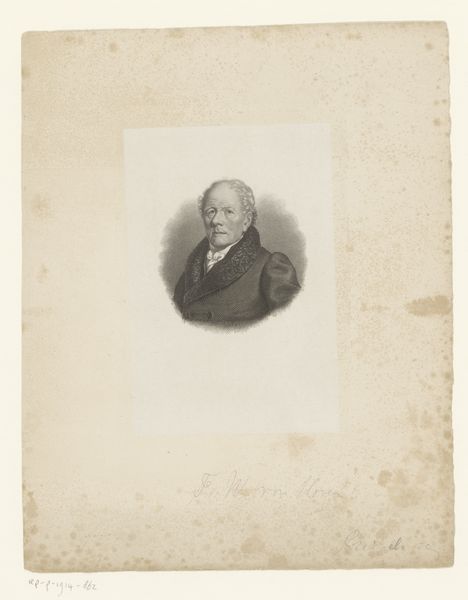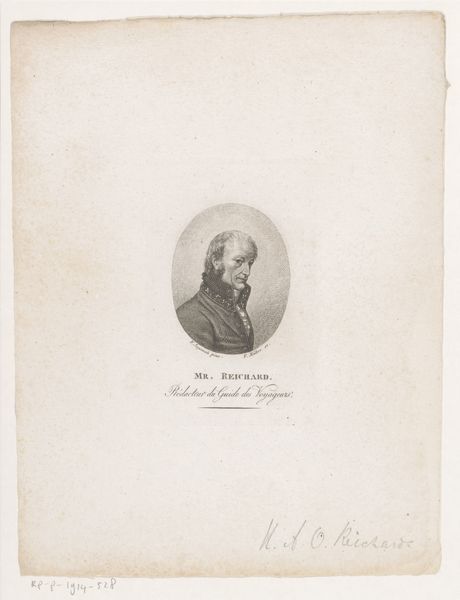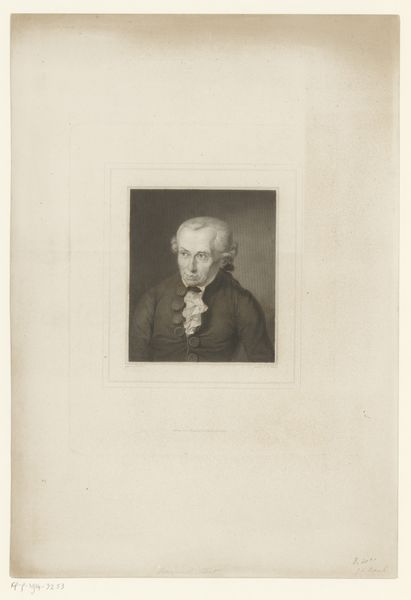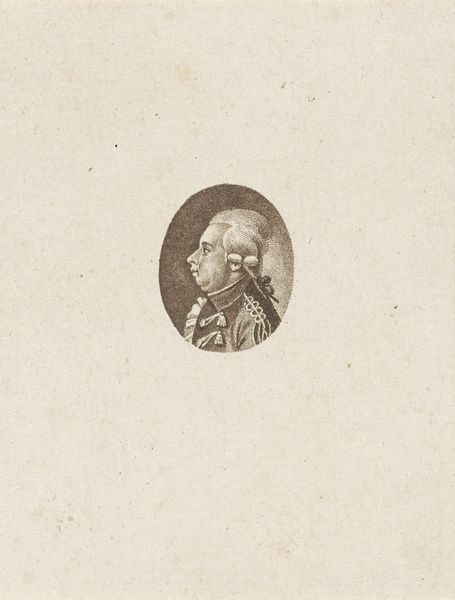
drawing, print, etching, graphite
#
portrait
#
drawing
# print
#
etching
#
graphite
#
tonal art
#
academic-art
Dimensions: height 126 mm, width 114 mm
Copyright: Rijks Museum: Open Domain
Editor: Here we have "Portret van Jozef Linnig," an etching and graphite drawing from between 1815 and 1891. The tonal variations are subtle, almost ghostly. What stands out to you? Curator: Immediately, I’m drawn to the process. Consider the labour involved in both the original drawing and its reproduction through etching, a technology that democratized image distribution. What social purpose did these multiples serve in that era? Editor: So you see the etching as less about artistic expression and more about... replication and accessibility? Curator: Not *less* about artistic expression, but inextricably linked. The hand of the artist is still present, meticulously translating the portrait. But consider also the role of the publisher, the etcher, the paper maker. This wasn't a solitary act. Editor: That’s a good point. So, who was consuming these portraits, and why go through the printing process instead of commissioning a painting? Curator: Portraits like these would have been accessible to a wider segment of the middle class, creating a visual culture beyond the elite. This speaks to a society that increasingly valued representation and potentially even personal branding. Notice how the choice of materials affects our perception. Would an oil painting have the same impact? Editor: I hadn’t thought of it that way. Seeing it as a manufactured object almost flattens the romantic idea of portraiture, but democratizes access in a very modern sense. Curator: Precisely! And understanding those networks of production and consumption enriches our understanding of the artwork itself. Editor: This has really given me a new appreciation for understanding prints, particularly as products of their time! Curator: And a reminder that art is never truly divorced from the means of its making.
Comments
No comments
Be the first to comment and join the conversation on the ultimate creative platform.

